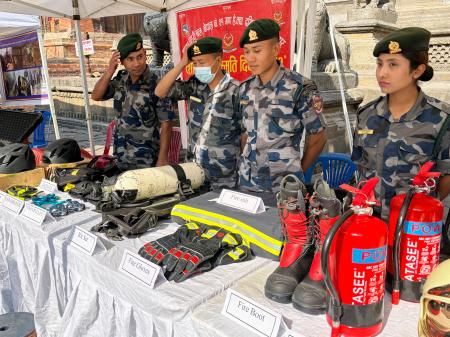Nepal Earthquake: Rebuilding, Reflecting, Remembering – A Decade of Resilience
Ten years after the devastating 2015 Nepal earthquake, the nation continues its journey of rebuilding, reflecting on the immense loss, and remembering the lives shattered by the disaster. This monumental event, registering a magnitude of 7.8 on the Richter scale, left an indelible mark on Nepal's landscape and its people. The earthquake's impact extended far beyond the immediate destruction, triggering landslides, crippling infrastructure, and claiming thousands of lives. Today, we explore the progress made, the challenges that persist, and the enduring spirit of the Nepali people.
Rebuilding Nepal: Progress and Persistent Challenges
The rebuilding efforts following the earthquake have been a testament to the resilience of the Nepali people and the international community's support. However, the path to recovery has been fraught with complexities.
Infrastructure Reconstruction: A Slow but Steady Pace
- Housing: Significant progress has been made in reconstructing homes, particularly in rural areas. Government initiatives, coupled with NGO support, have provided crucial assistance in rebuilding earthquake-resistant structures. However, challenges remain in ensuring equitable access to aid and addressing the needs of vulnerable populations.
- Schools and Hospitals: Many schools and hospitals were severely damaged. While reconstruction is underway, the need for improved infrastructure that can withstand future seismic activity remains paramount. Ensuring access to quality education and healthcare continues to be a priority.
- Transportation Networks: The earthquake caused significant damage to Nepal's road networks, impacting trade and access to essential services. While considerable progress has been made in repairing roads and bridges, ongoing efforts are required to improve connectivity, especially in remote regions.
Economic Recovery: A Long Road Ahead
The earthquake dealt a significant blow to Nepal's economy. The tourism sector, a crucial pillar of the economy, experienced a sharp decline. While tourism is gradually recovering, efforts to diversify the economy and enhance its resilience to future shocks are essential. This includes investing in sustainable infrastructure and promoting entrepreneurship.
Reflecting on the Past: Lessons Learned and Future Preparedness
The 2015 earthquake served as a harsh reminder of the vulnerability of Nepal to seismic activity. This necessitates a critical reflection on the lessons learned and a commitment to enhancing disaster preparedness and response mechanisms.
Strengthening Building Codes and Enforcement
One of the key lessons learned is the urgent need for stricter building codes and effective enforcement. Implementing earthquake-resistant construction practices is crucial to mitigating the impact of future earthquakes. This includes rigorous inspections, training for construction workers, and access to appropriate building materials.
Improving Disaster Response Capabilities
The earthquake exposed shortcomings in Nepal's disaster response capabilities. Improving coordination among government agencies, NGOs, and international organizations is crucial for efficient and effective relief efforts. This includes developing early warning systems and strengthening community-based disaster preparedness initiatives.
Remembering the Victims: Honoring the Lost and Supporting Survivors
Remembering the lives lost in the 2015 earthquake is vital. Many families continue to grapple with the loss and trauma experienced during the disaster. Providing psychosocial support to survivors, particularly children and women, remains a crucial aspect of the recovery process. This includes access to mental health services and community-based support programs.
Looking Ahead: Building a More Resilient Nepal
Nepal’s journey of recovery from the 2015 earthquake is a testament to human resilience. However, significant challenges persist. Continued investment in infrastructure, economic diversification, and enhanced disaster preparedness are crucial for building a more resilient and prosperous Nepal. International cooperation and continued support remain vital in this ongoing effort. The spirit of the Nepali people, their unwavering determination, and the global support for their recovery will ensure a brighter future.
Keywords: Nepal earthquake, 2015 Nepal earthquake, Nepal earthquake recovery, earthquake reconstruction Nepal, Nepal earthquake resilience, disaster relief Nepal, building codes Nepal, earthquake preparedness Nepal, Nepal earthquake victims, Nepal earthquake aid
(Note: This article is for informational purposes only. For the most up-to-date information on Nepal's earthquake recovery efforts, please consult official government sources and reputable news organizations.)
